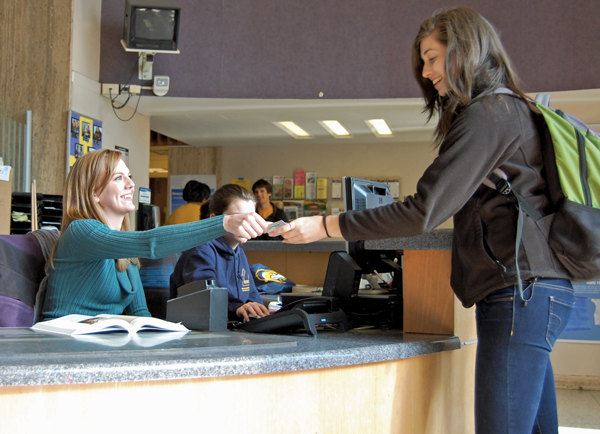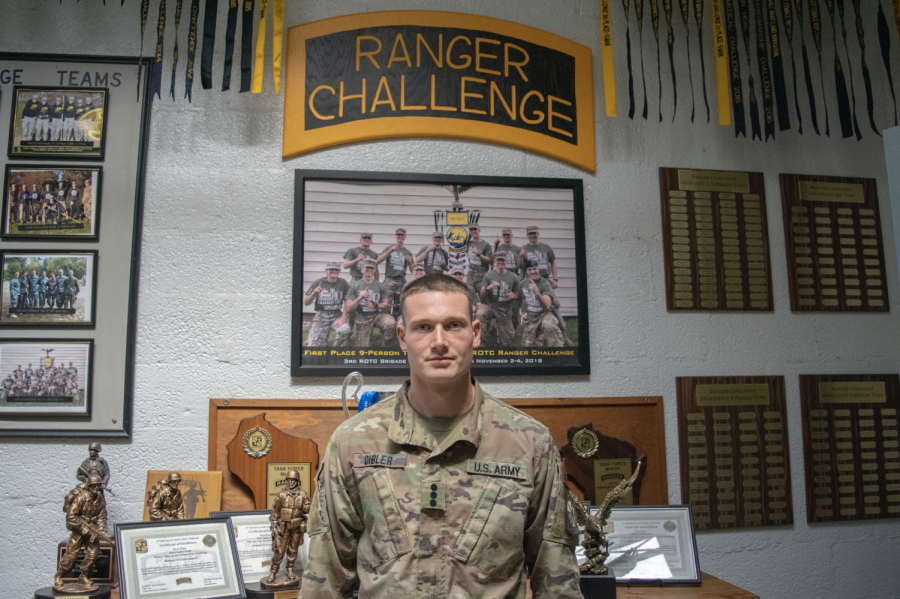Although there has never been an active shooter situation on Marquette’s campus, MUPD Captain Jeff Kranz is aware that national tragedies still require active response from safety departments around the country.
In light of the Oct. 1 shooting at a Las Vegas music festival, Kranz and other safety department heads at Milwaukee-area schools are reflecting on the situation and adapting new tactics into their active shooter preparedness programs.
Kranz said the Marquette University Police Department has been offering an active shooter course for years. He and two or three other officers teach the course to groups of employees or students, with the most recent group being the Alumni Memorial Union staff on Sept. 24. However, since the Vegas shooting, Kranz said MUPD shifted its approach to active shooter training.
“Up until maybe three or four years ago, a lot of our training was focused on getting into the building and trying to track down where the shooter is and put the shooter in a position where they can’t hurt anybody else,” Kranz said. “That’s still a big part of our training, but now – and I think you saw it in Las Vegas – another very, very high priority is getting EMS and medical services in to the wounded people.”
Kranz said MUPD uses the “Run, Hide, Fight” method regarding active shooter situations.
“You saw it in Vegas, where people hid, where they just took off and got out of the area, but you have to do that in a smart way, and that’s kind of what we teach when we do the class,” he said.
Kranz said the “run” component consists of being aware of one’s surroundings and knowing where exits are in buildings.
For the “hide” part of the mantra, he said students should know how to prevent an active shooter’s entry to their location.
“When we say ‘hide,’ that means knowing how to hide, not crawling under a table, but closing the door and barricading the door and doing things to impede that person’s ability to get in at you,” Kranz said.
Kranz said students should also be aware of their physical capabilities for the “fight” part of the method.
“If you don’t have the ability to hurt somebody, which is what you have to do when somebody’s trying to hurt you, maybe that’s not your option,” he said.
At the University of Wisconsin-Milwaukee, the UWM Police Department has offered active shooter training courses since 2004 or 2005, according to Officer Craig L. Rafferty.
Similar to MUPD, a few officers from the UWM Police Department teach the course to groups of students or staff. The department has also not dealt with an active shooter situation.
“We usually try to hold at least three classes first semester, so that’s one each month of the semester,” Rafferty said. “Then after the winter break, we’ll continue offering them.”
While MUPD uses “Run, Hide, Fight,” the UWM Police Department takes a different approach.
“We train under the ‘Avoid, Deny, Defend’ model,” Rafferty said. “We have switched the names (from ‘Run, Hide, Fight’) because it’s more comprehensive when you tell somebody to avoid the situation versus to run away from the situation, and so it makes it a little more detailed in understanding what the philosophy is behind each action.”
Rafferty said the climate today, especially after Las Vegas, makes it important for students to have situational awareness.
“We used to do (training) specifically for campus shootings, and now we kind of broaden it because we understand that these situations occur not only nationally, but globally,” he said. “So it’s just a good reminder – another tool on their belt – to be mindful that these situations can occur and then they have options to take should it arise.”
At the Milwaukee School of Engineering, active shooter training courses have been offered for the past two years and are taught by four instructors through their Public Safety Department, Director Billy Fyfe said.
Fyfe said they train under the ALICE mantra, which stands for Alert, Lockdown, Isolate, Counter and Evacuate.
“We used to train under ‘Run, Hide, Fight,’ but we felt that ALICE gives us better tools to use to handle that situation. ‘Run, Hide, Fight’ is pretty much the same as ALICE; however, ‘Run, Hide, Fight’ was introduced quite some time ago,” Fyfe said.
While the MSOE Public Safety Department currently offers voluntary courses once each in the fall, spring and winter quarters, Fyfe said they plan to make active shooter training mandatory in 2018.
Fyfe said that although MSOE has never faced an active shooter situation, they have discussed national situations, including the events in Las Vegas.
“We’ve met since that Vegas shooting and we’ve looked at the incident that happened in Vegas and different ways to approach it in case that situation was to occur on campus,” he said.
He said students should take active shooter training courses to be prepared in case of a real-life active shooter situation.
“The better informed you are and prepared you are, the chances of survival are going to increase for you,” Fyfe said. “If you don’t take these things seriously or if you don’t want to participate at all, you’re going to be completely lost in a real situation. It’s best to prepare yourself for this, especially in this day and age we live in.”





